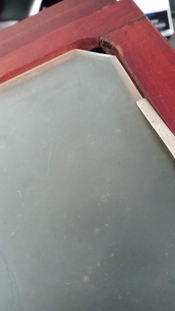Hi folks,
I'm ordering a new (gridless) ground glass for my Sinar P2 to use as an alternative to the heavily gridded one i already have.
The ground glass maker asks me if i want clipped corners.
Can anyone tell me?: what is the reason the corners are clipped and are they any advantages / disadvantages?
I'll be using this gridless GG purely for making aesthetic decisions in composition and lighting (via the reflex viewer) and will swap back to the gridded GG for more technical aspects.
Thanks!
I'm ordering a new (gridless) ground glass for my Sinar P2 to use as an alternative to the heavily gridded one i already have.
The ground glass maker asks me if i want clipped corners.
Can anyone tell me?: what is the reason the corners are clipped and are they any advantages / disadvantages?
I'll be using this gridless GG purely for making aesthetic decisions in composition and lighting (via the reflex viewer) and will swap back to the gridded GG for more technical aspects.
Thanks!









